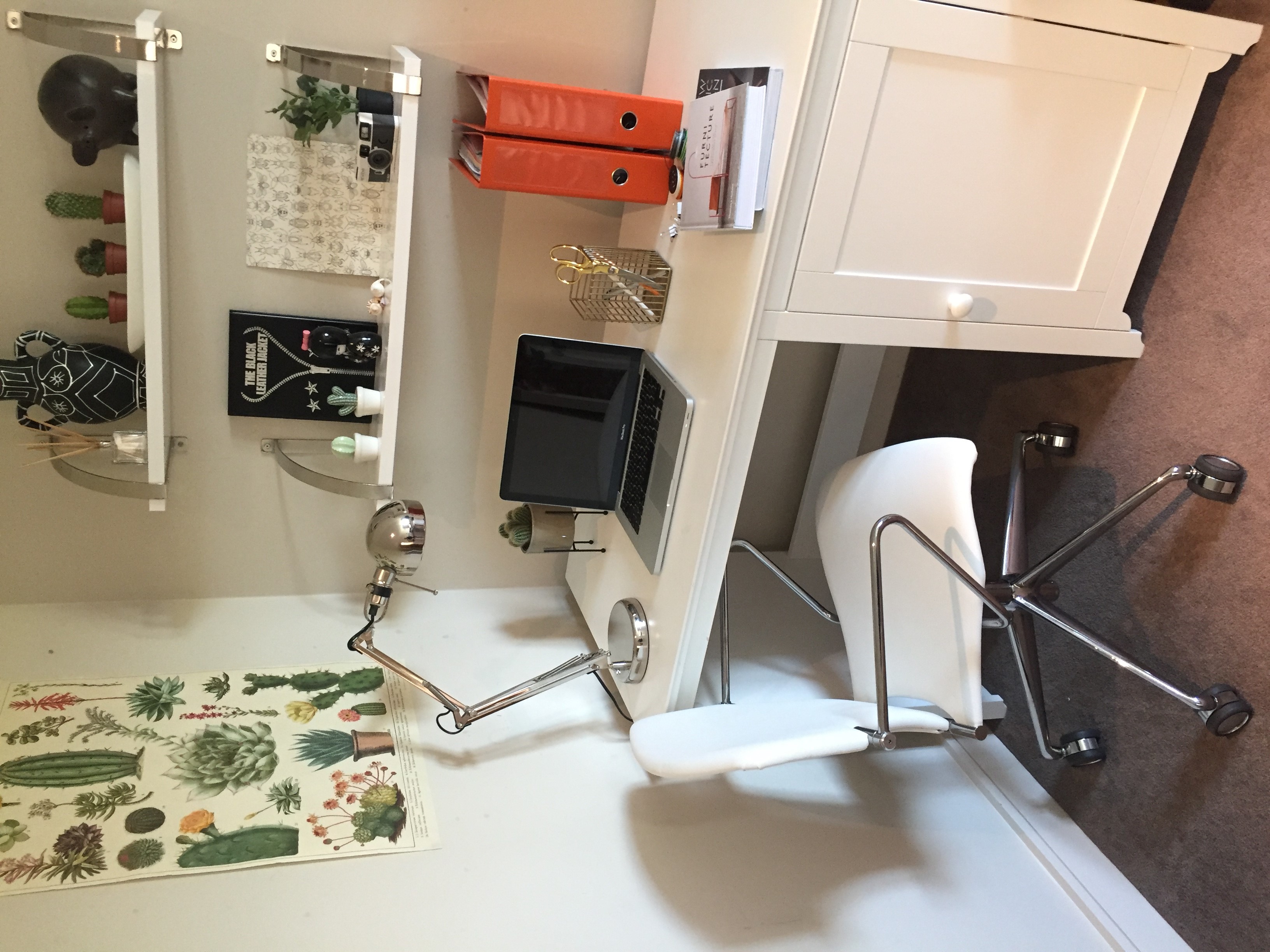Work-from-home office set-up secrets
By Helena Cousins, owner at Zinc Interior Design
Working from home? Hey, me too!
Many of us currently do so out of necessity, but the fact is that remote work is here to stay. Large companies are already implementing indefinite telecommuting arrangements, after all, there are plenty of ways in which working from home is better for workers and employers alike.
Yet, when it comes to decorating, the office is often the last room in the house to receive any attention. Whether your spare bedroom doubles as an office space, or you’re lucky enough to have a dedicated home office, the way it’s decorated can impact your work.
In the interest of helping you optimise your work-from-home situation as quickly and cost-effectively as possible, we thought we would share these tips;
- Protect your neck and back
Most traditional office environments are designed ergonomically. They’re built to help people feel as comfortable as possible during hours of uninterrupted work.
Days spent hunched over a laptop can lead to all sorts of physical aliments—from neck and back pain to carpal tunnel syndrome, chronic headaches and fatigue
First, elevate your screen and improve your posture. Your monitor should be at eye level. If you use a laptop, you might need a stand and/or a pile of books. Your hands should rest easily on your keyboard (again, if you use a laptop, you might need to plug in an external keyboard). Your back should be straight, elbows and knees bent at 90 degrees, and feet planted on the floor.
Second, consider what you’re sitting on. If your current chair isn’t comfortable enough, it’s time to—yes—invest in a good office chair. It’s worth the cost—you’ll avoid some expensive medical bills later on.
- Let there be light
The difference between a comfortable, welcoming, productive workspace, and that part of your home you dread entering frequently comes down to light. While many traditional offices are over-illuminated with harsh fluorescent ceiling lights, home offices tend to have the opposite problem—not enough light.
Brighten up your workspace with multiple light sources (e.g. two-floor lamps and a desk lamp). It’s a good idea to have both indirect, ambient light and task lighting available.
But whenever possible, natural light is your best option. Try to situate your workspace next to a window, and keep the blinds or curtains drawn. Your eyes will thank you.
- Close the door
I know not everyone can apply this tip. Perhaps you live in a studio apartment or share space with one or more family members, partners, or roommates. Maybe you’re stuck working from a kitchen table, counter, sofa, or bed.
But assuming you have a separate room in which you can work, you should treat that room like an office. That means creating a clear boundary between your workspace and the rest of your home—both a mental boundary for yourself and a physical boundary to keep other living beings out. The easiest way to do this is to shut the door.
- Personalise the space
Your home office is your office. It’s yours to personalise and decorate as you wish (although be careful not to have anything inappropriate visible during video calls). You can fill it with art, plants, and collectibles—whatever you want—or keep it sparse and minimal.
Play around with your lighting, colours, and furniture arrangement to find a setup that pleases you. And don’t be afraid to change things up every now and then and try something new. Have fun with it and make it your own. There’s no reason you shouldn’t love your workspace as much as any other part of your home.
A fresh coat of paint is one of the simplest yet most effective changes you can make to a space. The colour on the walls alone can play a role in your mood, productivity and job performance. After all, the colours you choose affect how you feel. And how you feel affects how you think and behave. So choosing the right colours and decorations can impact the success of your business.
I strongly urge clients to choose different colours for their home office because it is beneficial from a psychological perspective to create a distinction from the work environment and the rest of the home environment. This boundary will be an unconscious reminder to have boundaries and know when to take breaks.
Accent colours are colours that are used for emphasis in a colour scheme. These colours can often be bold or vivid and are used sparingly, to emphasise, contrast or create rhythm.
When we create a space that isn’t colour balanced – it has too much of one colour – it can leave us feeling off-balanced as well. Incorporating accents is the perfect tool to create a balanced environment that supports your work efforts.
But make sure to keep work in the workspace. When your job is done for the day, leave your office, and spend time somewhere else. It’s essential that you honour the boundaries you’ve established. Don’t let life become work or work become life. Don’t do chores while at work. Don’t answer emails when you’re playing Monopoly with your family.
Helena Cousins is a member of the Interiors Association whose objective is to demonstrate the positive impact of design on peopleʼs lives and the value of engaging an interior design professional in Ireland.
Image shows white eco leather Stua Egoa chair, available from Zinc Interior



